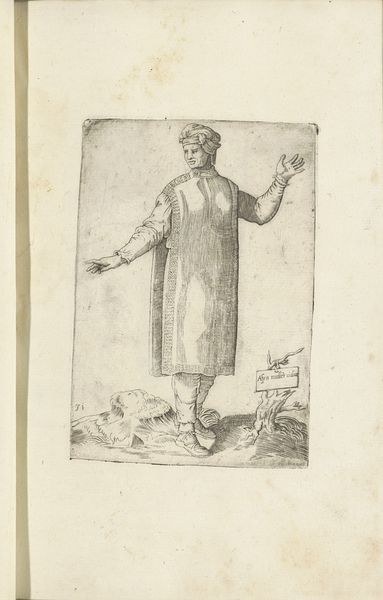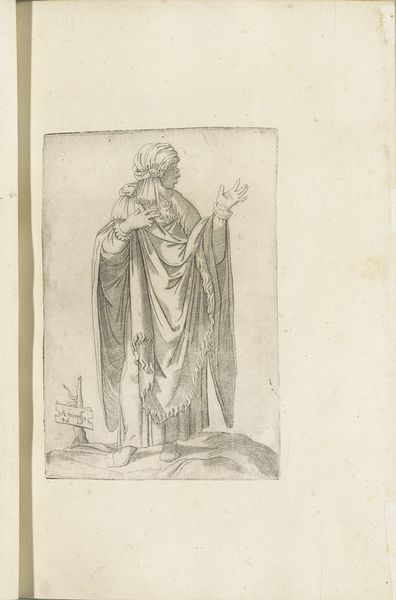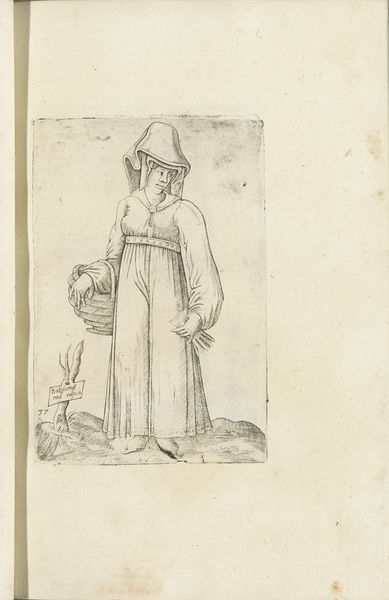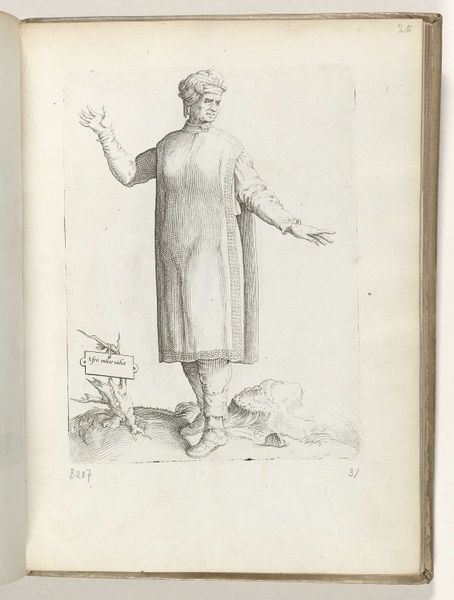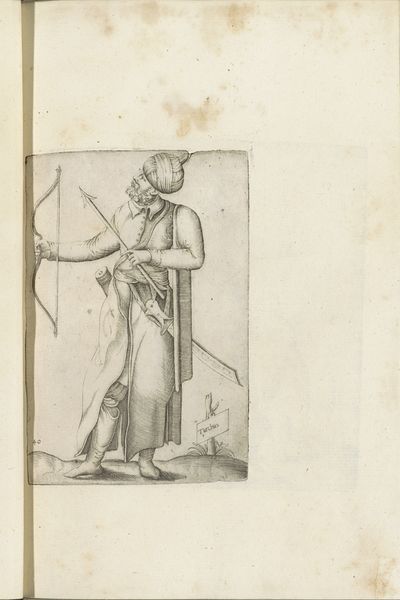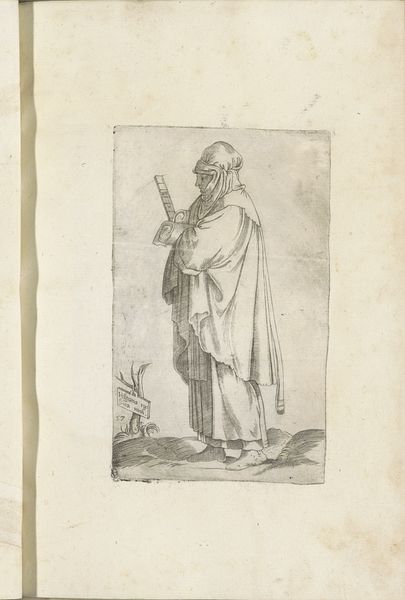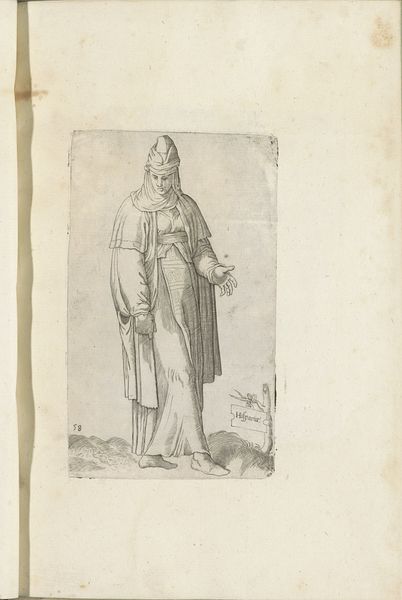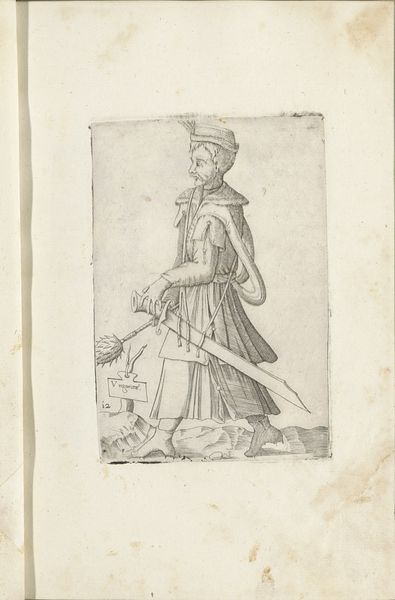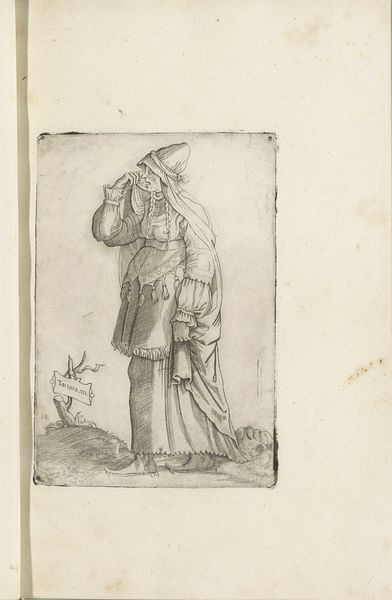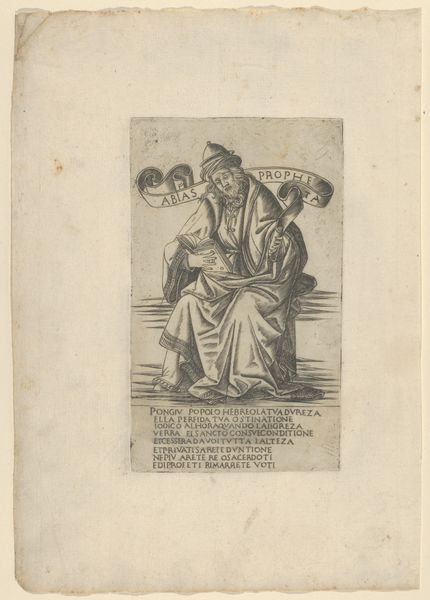
drawing, pencil
#
portrait
#
drawing
#
aged paper
#
toned paper
#
light pencil work
#
quirky sketch
#
pencil sketch
#
sketch book
#
figuration
#
11_renaissance
#
personal sketchbook
#
pen-ink sketch
#
pencil
#
line
#
sketchbook drawing
#
northern-renaissance
#
sketchbook art
Dimensions: height 265 mm, width 195 mm, height 150 mm, width 105 mm
Copyright: Rijks Museum: Open Domain
Editor: So, this is "Hongaarse vrouw," a pencil drawing from 1569 by Ferando Bertelli, housed at the Rijksmuseum. It’s interesting; it has this sketchbook quality, but the figure is presented so formally. What do you see in this portrait? Curator: I see a visual encoding of power and identity at a very specific historical juncture. This isn't just a portrait; it's a statement about belonging and perhaps even resistance. Note the almost anthropological quality in how the subject is represented; we might ask ourselves, what does it mean to present a "Hungarian woman" in 1569, and what kind of power dynamics were at play? Editor: Resistance? What makes you say that? Curator: Well, consider the context. The Habsburg Empire was expanding, and Hungary was a contested territory. Displaying and preserving these images serves as both historical documentation and as symbols of defiance of subjugation, reinforcing identity amidst political upheaval. This work serves as evidence that she holds a different social position from the ruling family; however, it also begs a question regarding who had the power to choose this "Hungarian woman," as a sign of national representation, thus reflecting back who created it as a work and how, where and why it has been archived until now. Editor: That's fascinating. So, you're saying this seemingly simple sketch is a complex negotiation of identity, power, and cultural representation. I would've never thought of it that way. Curator: Exactly! This is where art history and contemporary theory can meet: by looking at artworks like this, not just as aesthetic objects, but as loaded documents that tell us stories about gender, race, and politics. Now what’s interesting, going further with that thread, are there more sketches like this made by the same author? Editor: That's definitely given me a lot to consider. Thanks for sharing your perspective! I’ll look at art through a completely new lens. Curator: My pleasure, hopefully opening these conversations pushes the art to be a step closer to a visual statement of resistance!
Comments
No comments
Be the first to comment and join the conversation on the ultimate creative platform.

